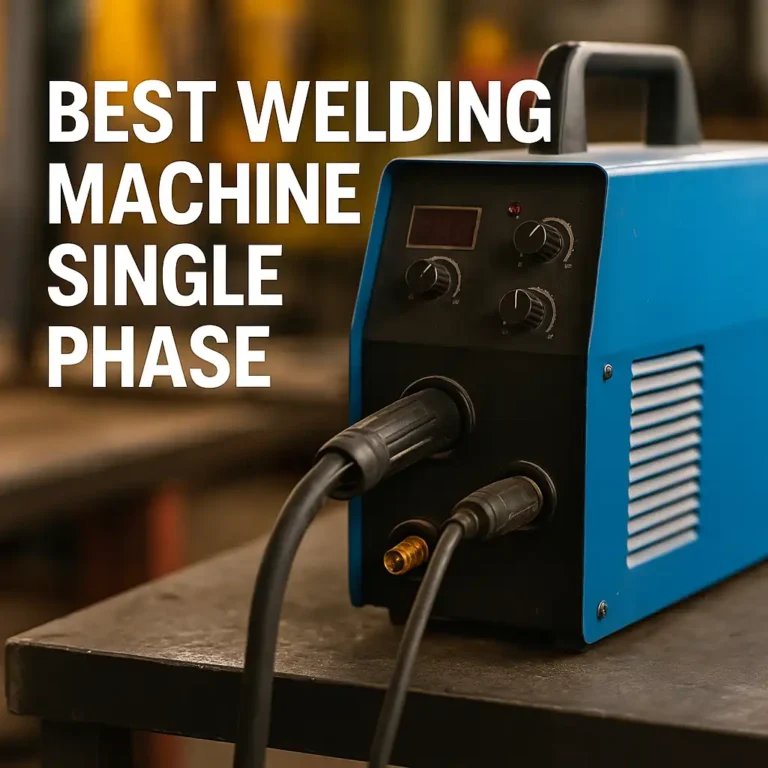Best Welder Generator Combo for Power and Performance

For welders working in remote locations, on job sites without reliable electricity, or for those seeking versatility in their equipment, a welder generator combo is an essential investment. Combining the functionality of a welding machine with the power supply capabilities of a generator, these units provide unmatched convenience and efficiency. Choosing the best model for your needs ensures you get seamless welding performance without compromising on power output. Let’s explore some top-rated welder generator combos and what makes them stand out.
What to Look for in a Welder Generator Combo
Before diving into product recommendations, it’s important to understand the key features that make a welder generator combo worth the investment.
- Power Output: Look for units with ample wattage to handle both your welding needs and additional power tools on-site.
- Welding Capabilities: Some combos specialize in stick welding, while others offer MIG, TIG, or multi-process options.
- Portability: Depending on your workspace, a compact and mobile unit may be ideal for ease of movement.
- Fuel Efficiency: Long run times and fuel efficiency are critical for reducing downtime during extended projects.
- Durability: Rugged frames, protective casings, and quality components ensure the machine withstands tough job site conditions.
Top Picks for the Best Welder Generator Combo
Hobart Engine Driven Generator/Welder, 40 to 145
This Hobart model is a reliable option for those seeking a dependable generator welder for light to moderate welding tasks. With a welding output range of 40 to 145 amps, it’s perfect for maintenance work, farm repairs, and general fabrication.
Key Features:
- Wattage: 4,300 watts
- Welding Process: Stick welding (SMAW)
- Fuel Efficiency: Excellent run time for extended operation
- Portability: Lightweight with a durable frame for easy transportation
Tomahawk 145 Amp Welder Generator Engine Driven 4300 Watt
This Tomahawk Power unit offers both power and portability. With a maximum power output of 4,300 watts and a welding capacity up to 145 amps, it’s designed for flexibility across various job sites.
Key Features:
- Wattage: 4,300 watts
- Welding Process: Stick welding (SMAW)
- Durable Design: Built with a steel frame to withstand rugged job site conditions
- Ease of Use: Simple controls for quick setup
Klutch 11kW Engine-Driven Inverter Stick Welder/Generator
For those seeking maximum power and versatility, this Klutch model stands out with its 11kW output and impressive welding capacity. It supports a range of welding processes and delivers consistent performance.
Key Features:
- Wattage: 11,000 watts
- Welding Process: Stick welding (SMAW) with LCD screen for precise settings
- High Performance: Ideal for heavy-duty industrial use
- Multi-Voltage: Supports both 120V and 240V for added flexibility
Which Welder Generator Combo is Right for You?
Choosing the ideal model depends on your welding needs. The Hobart engine-driven generator/welder is a dependable option for lighter maintenance work and mobility. If you require higher power output for tougher welding tasks, the Klutch 11kW Engine-Driven Inverter offers superior strength and flexibility. Meanwhile, the Tomahawk 145 Amp Generator Welder strikes a balance between performance and portability.
Conclusion
Investing in a quality welder generator combo is a game-changer for welders working in remote areas or on demanding job sites. The right unit not only powers your welding tasks but also ensures reliable electricity for your tools and equipment. By considering factors like power output, portability, and durability, you can select a model that fits your needs and boosts your welding efficiency.






